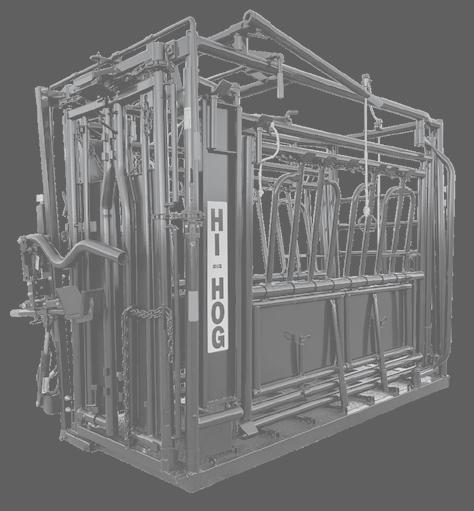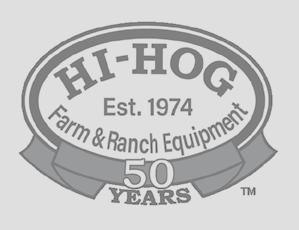




BY ANGELA LOVELL
A recent status update on the National Beef Strategy shows there has been considerable progress towards its goals, despite many challenges that the beef industry has faced over the past two years. Those challenges include drought, feed shortages, rising energy and input costs, and a post-pandemic recovery that has caused food inflation and reduced consumer spending power.
The Canadian beef industry developed the Strategy to capitalize on opportunities and identifies a number of priority goals related to increasing beef demand, improving beef competitiveness, boosting production efficiency and ensuring positive connections with the public and consumers.
“The National Beef Strategy brings all the national associations together to collaborate and reduce duplication of efforts, providing the best return to producer investments,” says Nathan Phinney, Canadian Cattle
Association President. “A strategy provides clarity on where industry is going so that we can get there faster. Updating the strategy every five years allows industry to make adjustments for different points in the cattle cycle.”
Positive stories about beef production
One of the biggest highlights of the Strategy’s many achievements to date is a more positive public and consumer perception of the beef industry and its production practices, especially in terms of sustainability and the environment.
Greenhouse gas emissions from the beef sector were down by 15% in 2021, halfway to the goal of reducing emissions by 30% by 2030.
Public and Stakeholder Engagement (PSE) continues its work to build public trust. Successful advocacy campaigns such as ‘Don’t Label My Beef” and “Say No to a Bad Deal” have gained public support and influenced policy makers. PSE research shows strong support for
the beef industry and fewer negative perceptions about production practices than in the past.
“Being able to highlight that our production practices are sustainable and good for the environment, and having some metrics and measurement supporting that, is huge,” says Matthew Atkinson, Manitoba Beef Producers president.
“The industry has worked hard to highlight and show what we do and we have been able to change the narrative in our industry, and public perception is getting better of our industry and our production practices,” Craig Lehr, Chair of the Beef Cattle Research Council (BCRC) says. “To be able to change perceptions and show what we do, and the benefits we provide to the environment and the quality product we provide, and the health benefits of it is huge.” page 5





It’s starting to feel like summer is drawing to an end once again. The days are getting shorter, with haying winding down and lots of combines starting to roll this year. For a lot of us involved as representatives of the beef industry, this also means that we’ve just been to the Canadian Beef Industry Conference (CBIC) and the Canadian Cattle Association’s (CCA) semi-annual meeting.
As always, these events are a great opportunity to get together with other folks from coast to coast to share the issues and opportunities that are local to us, but also to recognize just how much these are in fact common matters of interest across the country.
All of our provincial organizations have the opportunity to put representatives forward to CCA and we work together on provincial and national issues. From Manitoba, I think we should be proud of the strong showing we have, with Tyler Fulton as CCA vice-president and Co-chair of the Foreign Trade Committee; Mike Duguid on the executive and co-chair of the Environment Committee; myself on the executive and co-chair of the Animal Health and Care committee; Arvid Nottveit as Finance committee chair; and Mark Vachon as Manitoba’s youth representative and will be moving into the vice-president’s position at the Canadian Cattle Youth Council (CCYC). I feel this is excellent representation as we see Manitoba producers taking on these roles nationally and it is great to have such leadership around the CCA and CCYC tables.
These twice a year in-person CCA meetings (aside from committee meetings), kicked off with a provincial chairs and managers meeting. This is a great opportunity for the chairs and general managers from each provincial association to sit down and share challenges, to compare notes on potential solutions and to collaborate. I always feel the round table portion of this meeting is very informative. In some ways it introduces us to vastly different challenges across the country, while also reinforcing in other ways how common the obstacles facing our industry are. I am sure it comes as no surprise to anyone that effective and affordable business risk management tools, tied in with a shrinking cattle herd, and

land conversion are always a topic of conversation.
These of course are common themes of the Domestic Ag Committee that is always striving for effective and affordable business risk management programs, like Livestock Price Insurance. Other topics of consideration at this committee include making sense of capital gains changes and the impacts that it will have on Canadian farmers and ranchers, and digging into potential AgriStability program changes.
The Animal Health and Care Committee has also been very busy as of late trying to stay informed and give feedback on the situation involving highly pathogenic avian influenza (HPAI) crossing over into dairy cattle in the United States. This is an ever-evolving situation which it is important to stay on top of and to give feedback where we can. Along with this, the fast approaching new federal traceability requirements and how to do as best we can to be ready for these changes were a topic of discussion.
Access to antibiotics is being looked at from a few different angles. There is some international pressure for the reduction of antimicrobial use in agriculture to which our industry is responding to, and we are also trying to get better access to new, and to retain access to existing veterinary drugs on the market. The challenge to this is that Canada is a relatively small market with a fairly arduous and expensive process for approval of medication for sale in Canada that we are striving to have government streamline.
Another big topic at the Animal Health and Care Committee is that all these years post-BSE, specified risk materials (SRMs) are still required to be removed from all cattle over 30 months in Canada. In 2021, Canada received negligible risk status for BSE under the World Organization for Animal Health, which placed Canada alongside the US at the lowest designation of
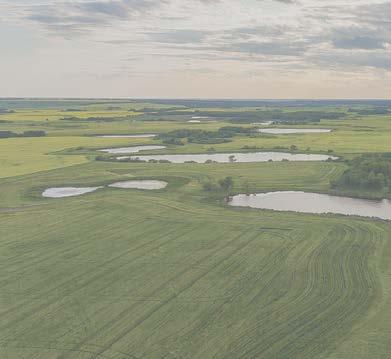
T 1 ALFRED EPP
Boissevain-Morton, Brenda-Waskada, Grassland, Deloraine-Winchester, and Two Borders
DISTRIC T 2
MARK SCHRAM
Argyle, Cartwright-Roblin, KillarneyTurtle Mountain, Lorne, Louise, Pembina, and Prairie Lakes
DISTRIC T 3 ANDRE STEPPLER
Cartier, Du erin, Grey, MacDonald, Portage la Prairie, Rhineland, Roland, Stanley, Thompson, Montcalm, Morris, and Ritchot
DISTRIC T 4 BYRON FALK De Salaberry, Emerson-Franklin, Hanover, La Broquerie, Piney and Stuartburn, Montcalm, Morris, Ritchot, Spring eld, Ste. Anne, Taché, R.M. of Piney and Reynolds
DISTRIC T 5 STEVEN MANNS Cornwallis, Elton, Norfolk-Treherne, North Norfolk, Oakland-Wawanesa, Glenboro-South Cypress, and Victoria
DISTRIC T 6 BRIAN ENGLISH Pipestone, Riverdale, Sifton, Souris-Glenwood, Wallace-Woodworth, and Whitehead
DISTRIC T 7 T YLER FULTON 2ND VICE-PRESIDENT Ellice-Archie, Hamiota, Prairie-View, Riding Mountain West, Rossburn, Russell-Binscarth, and Yellowhead
DISTRIC T 8 MATTHEW ATKINSON Clanwilliam-Erickson, Glenella-Lansdowne, Harrison-Park, Minto-Odanah, Oakview, North Cypress-Langford, Rosedale, and West Lake-Gladstone
risk for transmission of BSE. There are significant costs involved with removing these materials at processing in Canada, as well as some continued trade impacts related to the existing SRM requirements. In the end, Canadian industry dollars were used to co-fund a research paper looking at the effects of potential changes to these removal requirements that is currently out for international peer review. Once the final review is completed, our hope is to be able to get to a point where there is better alignment of SRM removal requirements in Canadian processing plants with what is required in the US. This would save the Canadian beef supply chain millions of dollars a year, while also making it more appealing for beef processing facilities to be built in Canada. And work continues to advocate for the removal of remaining market access barriers for Canada related to BSE.
As part of this CCA summer meeting, we also see top leadership and staff from the Canadian, American and Mexican beef industries sit down in a tri-lateral meeting. These meetings are held three times a year, once in each country, and are a great way to work on the trade relationships that are necessary for all of us to exist.
The week ended with lots of forward movement on issues and some strong direction on policy. CCA has a very strong government relations network in places such as Ottawa and works along with the provincial cattle associations like MBP to advance issues of importance to our industry. It’s worth noting that the CCA has a long-standing and effective advocacy track record with governments, with it often appearing at or very close to the top of lists ranking lobbyists. This is being achieved while maintaining a great relationship that sees Canadian farmers and ranchers who go to Ottawa to advance industry matters always receiving a warm welcome. They are seen to be authentic voices, respected for the benefits of cattle production to our landscape and for taking forward a genuine message on issues that is based on science. That is very important as we seek to resolve industry concerns and to promote opportunities for our sector.



DISTRIC T 9 TREVOR SUND Alexander, Brokenhead, East St. Paul, Lac Du Bonnet, Rockwood, Rosser, St. Andrews, St. Clements, St. Francois Xavier, West St. Paul, Whitemouth, Woodlands, LGD of Pinawa, Reynolds, Spring eld, Ste. Anne, and Taché
DISTRIC T 10
MIKE DUGUID SECRETARY Armstrong, Bifrost-Riverton, Fisher, and Gimli
DISTRIC T 11
ARVID NOTT VEIT Coldwell, Grahamdale, St. Laurent, and West Interlake
DISTRIC T 12
MARK GOOD TREASURER Alonsa, Lakeshore, McCreary, and Ste. Rose
Greetings friends,
A summer of mixed weather is winding down. I know many of you have been hard at work with harvest. Before we know it, the fall run will begin. Here’s hoping that prices continue to remain strong and you head in to the winter months with a smile on your face.
As I write this, I have just gotten home from the Canadian Beef Industry Conference (CBIC) and the Canadian Cattle Association (CCA) semi-annual meetings in Saskatoon. It was great week, with networking and learning with many industry colleagues and producers. I loved seeing all the optimism and positivity after many years of hardship, including drought.
Throughout the event, a number of themes or topics were focused on. The following are a few of my takeaways from the week.
A looming threat taking up much industry effort is the threat of an animal disease outbreak. This worry is often enhanced by the memory of the 2003 BSE crisis and its lasting effects. We saw many producers have to leave the industry completely due to border closures and secondary impacts following. As Foot and Mouth Disease (FMD) continues to spread globally, industry is preparing for a North American response. We anticipate that a closure of many trade borders will occur were the disease to reach here. The main goal will be to contain the spread and re-open the borders to trade as swiftly as possible. Industry is collaborating on this effort with multiple stakeholders. As well, we know that the impact will lead to financial strain on producers, so we are looking at ways to maintain business continuity once the impact is felt. Although the threat is out there but not present yet, industry has deemed this as a “not if, but when” scenario. Preparations are very important for our industry’s future, and industry is working hard to be ready.
To get prepared for the response to an animal disease outbreak, traceability is crucial. We have had a traceability system in Canada for many years. It has parts that are efficient, but in need of many improvements to make it as responsive as possible. What industry is looking at is improvements to the use of technology to simplify traceability for producers. Using digital data tracking is something many sectors have adopted, and this would greatly benefit our industry. An example of this would be using a smart phone application to collect and report movement records to the Canadian Cattle Identification Agency (CCIA), to allow for swift access to animal location data if a disease response is necessary. Multiple tools, such as RFID wand readers, are also available. MBP strongly encourages producers to consider adopting these tools for traceability, as well as for on farm data management.
Another thing I will touch on from the week in Saskatoon was the amazing youth presence there. It was very evident in the amount of optimism in the Canadian Cattle Young Leaders Program. A large number of grad-





CARSON CALLUM General Manager’s Column
uates from that program were featured during the event. To have a bright future, the industry needs this sort of engagement from youth who will one day take over the farm. The CCA does a great job spearheading these youth initiatives. I strongly encourage all to get involved in this, whether it’s as a mentor or a youth delegate, to foster learning. Continuous learning for us all is what improves the industry.
During the week at CBIC, attendees could also observe meetings of various CCA committees, including foreign trade, animal health and care, domestic agriculture, food policy, and environment. For those interested, it is a great way to see how industry policy and advocacy efforts are decided. As stated before, FMD preparedness was a major theme throughout the committee meetings. Throughout these meetings, directors from across the country have helpful discussions about the direction that needs to be taken to prepare and withstand such a disease. This is another benefit for being at CBIC.
The conference is also an important opportunity to recognize the good environmental work that is taking place in our industry via the presentation of The Environmental Stewardship Award (TESA). Manitoba was represented in the competition this year by our local TESA recipient, the Association of Manitoba Community Pastures (AMCP). Although not the national winner, the AMCP’s staff are working hard to manage the pasture system sustainability for generations of pasture patrons to come.
When we think about our direction and policies as an organization, it is important to remember the meetings we have coming up that help our board keep our industry’s important issues and opportunities front and centre. These are our district meetings, which start mid-October to the start of November and set for odd-numbered districts where director elections are required. This is your reminder to check our website and your mailbox for the meeting schedule and hopefully you can attend. And, it’s not too soon to be thinking about attending our Annual General Meeting taking place February 20-21, 2025 in Winnipeg.
I hope you all have a great harvest season, and a profitable fall run.
Until next time, Carson



BY: ANGELA LOVELL
Working on the Farm with Hands-On Science is the theme of the 2024 Manitoba Beef and Forage Conference that is being held in Portage la Prairie on Wednesday, October 30 at the William Glesby Centre.
It’s a theme that’s highly descriptive of many of the sessions that will help producers better understand the science behind beef production, cut through the negative ‘noise’ about its environmental impact, and provide some tools that they can use to improve efficiency, reduce GHG emissions and advocate for the industry.




Conference information and registration available here: https://mbbeef.ca/our-news/manitoba-beef-and-forage-conference/
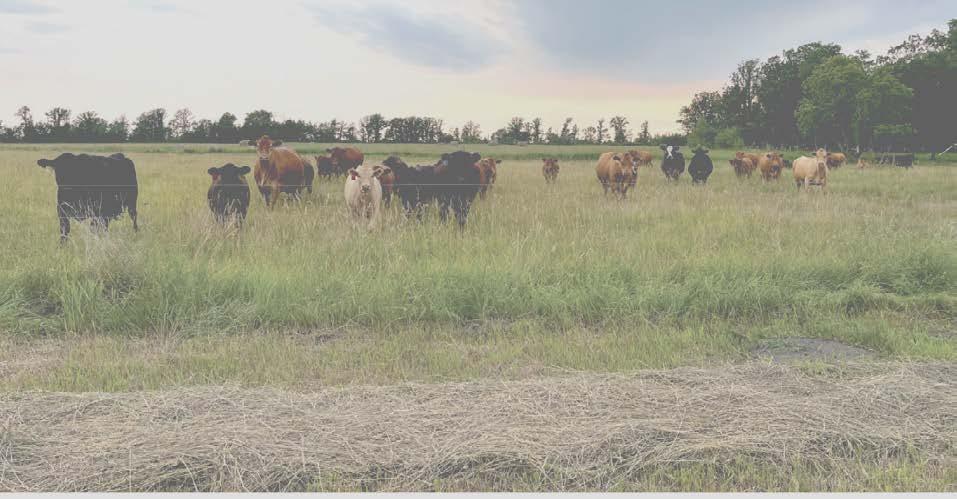

Dr. Frank Mitloehner of the University of California Davis kicks off the conference with his presentation about Climate-Smart Livestock: Separating Science from Scare Tactics.
Livestock production, in particular cattle, is often framed as being bad for the environment. Mitloehner has waded through the various narratives from a scientific perspective and will break them down so that producers can understand what’s fact and fiction.
As an example, many people do not realize that reducing methane emissions – the GHG that is produced from animals belching and manure decomposition –stays in our atmosphere for a much shorter time than CO2, laying the foundation for the livestock sector to be a part of a climate solution.
“It’s a session that educates producers as to what’s real and what’s not, and gives them tools to address those issues that are real, so that they can position themselves as being part of a solution and not part of the problem,” he says. “Once they do take action, it’s important to talk about what they do any why. If you do the right thing, but you don’t talk about it, then it’s as if you have never done it.”
There are a lot of topics covered throughout the day from strategies for low stress family succession planning to techniques to protect cattle from wolves. The breakout sessions feature local producers and their on-farm experiences and will discuss topics from control of Johne’s Disease, to business risk management tools, and mineral and vitamin nutrition.
Wrapping up the conference is Dr. John Basarab of the University of Alberta’s Livestock Gentec research centre, who will help producers learn about some genomic tools for commercial beef production that they can use to boost their profitability, reduce their carbon footprint and help cattle adapt to changing environments.
Livestock Gentec develops genomic tools to help commercial beef producers select replacement heifers for improved feed efficiency and fertility and sires that produce superior feeders for feed efficiency and carcass quality. Producers collect tissue samples to submit to Gentec and receive back genomic data – such as genomic breed composition, hybrid vigour score and gEPDs (genomic Expected Progeny Differences) for growth, feed efficiency, fertility and carcass traits.
Basarab will be sharing examples of how this genomic data can be used to help producers make breeding decisions to meet their goals and improve their herds.
“I hope that producers will gain a deeper understanding of the value of genomics to the profitability and sustainability of their cow-calf herd,” Basarab says. “Genomic tools like hybrid vigour score, genomic breed composition and the Replacement Heifer Profit Index Score increase calf crop percentage, while the Feeder Profit Index improves feed efficiency and carcass quality of slaughter cattle. Key to using these genomic tools is to have a DNA sampling strategy and to keep detailed cow-calf records.”

Research continues to help enhance those positive stories and address industry priorities. Since 2022, the BCRC has initiated 87 research projects covering the areas of animal health and welfare, antimicrobial use, forage and grassland productivity, feed efficiency, beef quality, food safety and environmental sustainability.
Progress on beef demand, competitiveness and productivity
Other Strategy highlights over the past few years include achieving BSE negligible risk status in May 2021 that resulted in removal of restrictions on Canadian beef imports by Singapore, Japan and Taiwan. Canada’s exports to Japan and Vietnam also grew because of preferential access through the Comprehensive and Progressive Trans-Pacific Partnership Agreement (CPTPP).
International beef demand hit a record high in 2023, with Canada exporting more than $5 billion worth of beef. This was the sixth year of record export values, demonstrating the industry’s long-term commitment to increasing market access.
“A key thing about our increased exports is that doesn’t include China,” says Lehr. “It’s positive that we are seeing those increases without that market.”
In terms of achievements on the Strategy’s competitiveness goals, the Canadian Food Inspection Agency’s
CFIA) approval of the feed additive Bovaer (3NOP) is lauded by industry.
“The CFIA taking a very strong approach and approving products like 3NOP to reduce methane emissions from cattle, that’s big and took a lot of work from industry to do that,” Lehr says.
Funding to develop a vaccine bank and preparedness plan for Foot and Mouth Disease has enhanced Canada’s biosecurity measures, and producers in Eastern Canada now have access to the Livestock Price Insurance program.
Industry working together gets results
The progress that has been made towards achieving the Strategy’s goals would not have happened without the industry working together, Lehr says.
“The reason that progress has been made is because the provincial organizations, the national organizations and everyone is working together and headed in the same direction,” he says. “With everybody communicating, and having goals and a strategy, our efforts are more focused and prioritized. The Strategy represents good business planning and management from the industry.”
Looking ahead
The Canadian Beef Advisors is renewing the National Beef Strategy for 2025-30, which will be re-
leased in January 2025.
Lehr believes building sector resiliency, and addressing weaknesses and challenges in the supply chain highlighted by the COVID pandemic, will be a high priority for the industry in the years ahead.
With costs and beef prices increasing, Atkinson believes the future Strategy will also focus on more robust risk management programs.
“We are now in a significantly different price bracket for livestock, much like we saw in the cash crop sector a number of years ago, and that changes everything,” Atkinson says. “The dollars and the numbers you are working with are bigger. When we start to move up into that realm, and we have seen a big demographic shift in the cattle industry too, it really highlights the need for better risk management tools to safeguard against major catastrophic events.”
“The 2025-30 National Strategy will be focused on alignment with the 2030 goals, ensuring all gaps are addressed in making those ambitious but realistic goals possible, while also recognizing the current market situation with food price inflation, interest rates and input costs that supply chain participants are facing,” Phinney says.
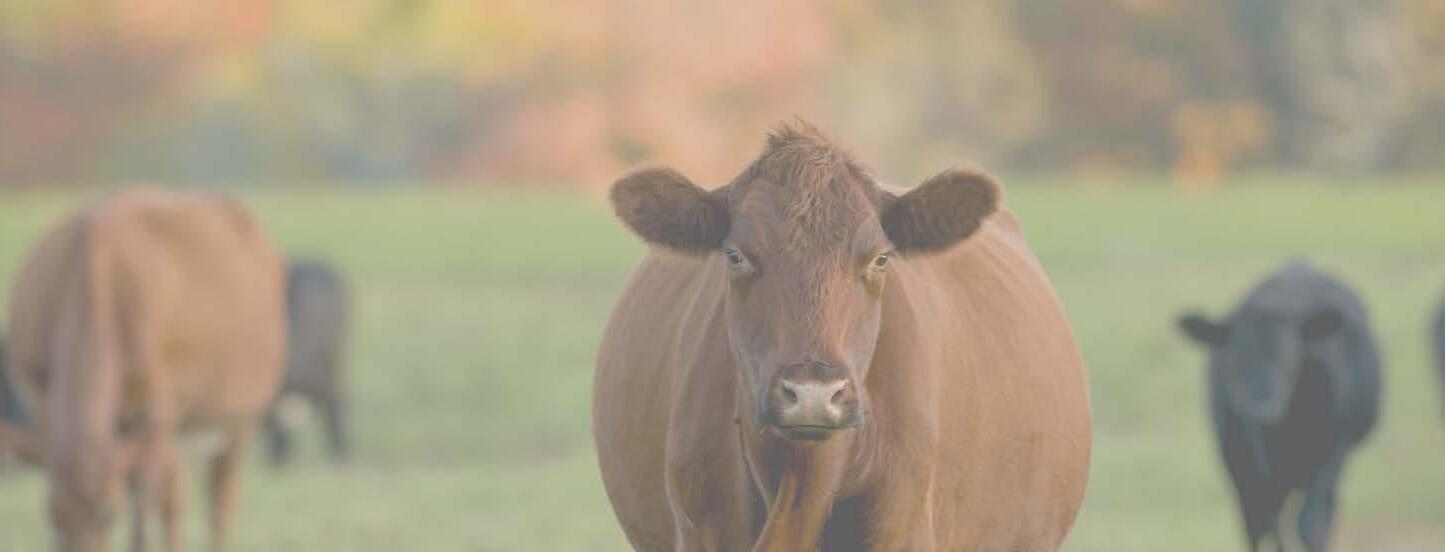




The 17th Annual Manitoba Youth Beef Round-Up was held August 2-4 at Stride Exhibition Place in Neepawa, Manitoba. This may be the best Manitoba Youth Beef Round-Up ever held with a record number of enthusiastic junior cattle producers and largest number of cattle to date.
Over 100 youth and 115 head of cattle gathered for an educational and fun weekend. This event draws youth aged 6 to 25 from Ontario, Saskatchewan, and Manitoba. Committee members consist of: Co-Chairs Lois McRae, Jake Rawluk and Laura Horner; Emma Harms, Ken and Kerri Hinsburg; Rilla Hunter, Megan Kemp, Samantha Korosil, Lana Krauss, Mary-Jane Orr, Albert and Michelle Rimke, Dalyse Robertson, Alice Rooke, Blair McRae, Kara Thompson, and Bobbi Jo Foster. The success of this event is attributed to not only the teamwork of the committee members but also the assistance of parent volunteers, jumping in whenever and wherever necessary. Our judges for the weekend were Justin Harcourt, Quill Lake, SK and Mason Beck, Lang, SK.
Friday events kicked off with the ever-popular Ag Challenge. Members are grouped into teams of all ages and sent on a scavenger hunt for various items. Educational workshops included learning how to wash and care for the animal’s hair and grooming, herd health with Dr. Liz Ostendorf (Neepawa Vet Clinic), making a herd health plan, record keeping, and verifying the beef program, health and medicine, mock interviews, branding yourself, filling out applications, and essential HR guides. Juniors finished off the day with the popular slip-and-slide.
Saturday began early with judging workshops facilitated by Justin and Mason.
Senior members were then required to judge heifers, steers, sheep, hay, and a scenario class, filling out a judging card for each and providing oral reasons for the cattle, sheep, and scenario classes. Intermediates provided oral reasons for the heifer and sheep class and written reasons for the others. Juniors provided written reasons for all and oral reasons for the heifer class.
Pee-wee members and new juniors were involved in a unique Cattle Camp where they learned how to judge in a more appropriate setting, as well as making and tying rope halters. After lunch, Cattle Camp members worked on grooming and showmanship while everyone else participated in team grooming, team judging, and sales talks.
The evening concluded with group members competing in the cook-off, where each group was provided with a steak and was required to prepare a meal for two discerning judges’ evaluation. Our judges were treated to feasts worthy of kings and queens! Steak judges were: Cam and Tracy Wood, Albert Rimke, Phil Reimer (Bullseye), Devin Boitson (Boehringer), and Wade Beck.
Sunday is show day. It begins with showmanship and is followed by the conformation show, a parade of 4-H Champions, and the Supreme Show. The weekend concludes with awards and supper. A large crowd attended the weekend events.
Individual Judging (sponsored by Mazergroup)
Junior Champion: Abby Snowden
Reserve Junior Champion: Blake Airey
Intermediate Champion: Katelyn Rutten
Reserve Intermediate Champion: Fischer Cavers
Senior Champion: Lainie Muir
Reserve Senior Champion: Cora Baker
Team Judging
(sponsored by Neepawa-Gladstone Co-op Ltd, Neepawa-Gladstone Co-op Ltd., Heritage Co-op, Twin Valley Co-op, and Valleyview Co-op)
Champion Intermediate: Brycen Frecon and Keira Duguid
Reserve Intermediate: Joran Frey and Otto Veldhuis
Champion Senior: Lainie Muir and Cora Baker
Reserve Senior:
Teegan Hyndman and Allie Lavich
Sales Talk
(sponsored By Manitoba Beef Producers)
Champion Pee-Wee: Ruby Fox
Reserve Pee-Wee: Bexley McIntosh
Champion Junior: Emery Griffin
Reserve Junior: Cohen Canart
Photography
Champion Pee-Wee: Bexley McIntosh
Reserve Pee-Wee: Weston Manz
Champion Junior: Ella Sellman
Reserve Junior: Abby Snowden
Intermediate Champion: Fischer Cavers
Team Grooming (sponsored by Bullseye) Champions: Katelyn Rutten, Keegan Dyke, William Keen and Kaleb Bootsman Reserve Champions: Joran Frey, Lillian Seward, Harley McCauley, Blaer Boultbee
Ag Challenge Champions (sponsored by Mazergroup)
Sophie Koshel, Rhett Sigurdson, Oral Duguid, Oliver Kyle
All-Star Team: Laura Seward, Otto Veldhuis, Sawyer Morrison, Jorja Manz, Calder Thorgillson
Digger Award (sponsored by Neepawa-Gladstone Co-op Ltd., Heritage Co-op, Twin Valley Co-op, and Valleyview Co-op): Kara deRocquigny
Young Handler Award: Ruby Fox
Herdsman Competition (sponsored by Gordon Peters): Katelyn Rutten, Joran Frey and Sophie Koshel
Bob Gordon Memorial Award (overall top judge) (sponsored by the Bob Gordon Family): Katelyn Rutten
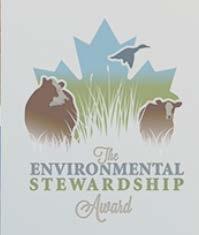
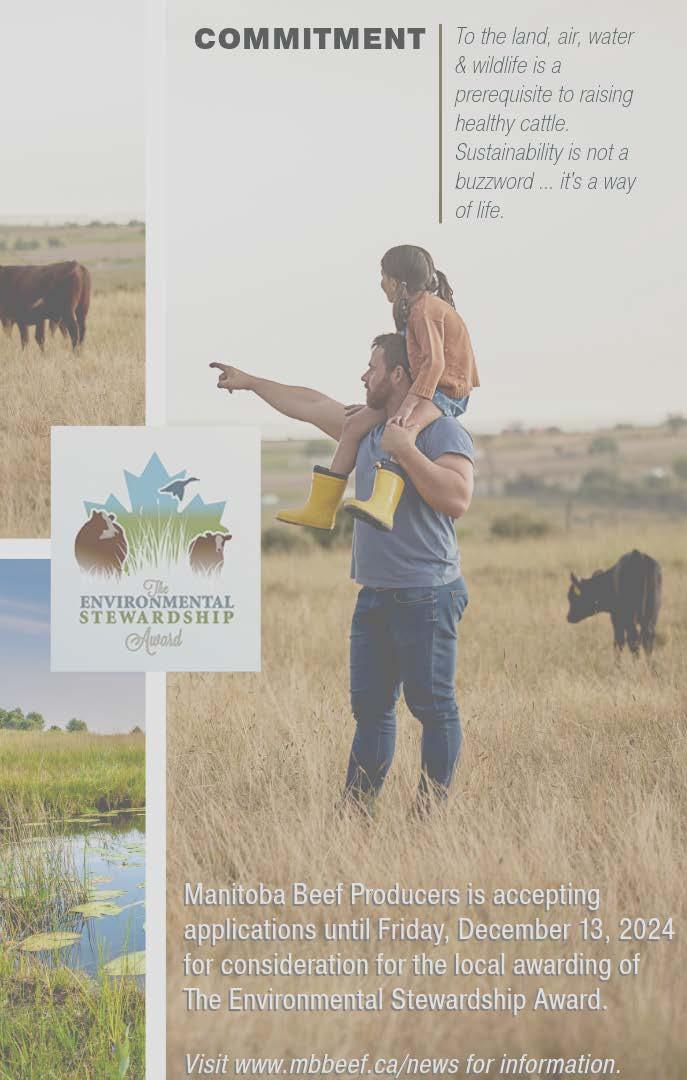
Reserve Intermediate: Kati Mott
Senior Champion: Allie Lavich
Reserve Senior: Lainie Muir
Graphic Design
(sponsored By Manitoba Beef Producers)
Champion Pee-Wee: Paisley Baron
Reserve Pee-Wee: Britton Canart
Champion Junior: Reid Duguid
Reserve Junior: Orla Duguid
Champion Intermediate: Fischer Cavers
Reserve: Lukas Cavers
Champion Senior: Lainie Muir
Reserve Senior: Cora Baker
Art
Champion Pee-Wee: Lakelyn Brown
Reserve Pee-Wee: Bexley McIntosh
Champion Junior: Blake Airey
Reserve Junior: Ryder Muir
Champion Intermediate: Laura Seward
Reserve Intermediate: Sophie Koshel
Senior Champion: Lainie Muir
Reserve Senior: Cora Baker
Scrapbook
Champion Pee-Wee: Bexley McIntosh
Reserve Pee-Wee: Benson Bootsman
Champion Junior: Breelee Bootsman
Reserve Junior: Kaleb Bootsman
Champion Intermediate: Laura Seward
Reserve Intermediate: Keira Duguid
Champion Senior: Teegan Hyndman
Reserve Senior: Lainie Muir
Cookoff Champions (sponsored by Enns Bros. Ltd.)
Brooke Collins, Thomas Allen, Abby Snowden, Steinna Vigfusson, Declynn Allum, Keirsten Davey, Britton Canart, Lauren Forsyth and Ruby Fox
2024 Round-Up Scholarship Awarded to Teegan Hyndman
Aggregate Award Winners (sponsored by Enns Bros. Ltd.)
Pee Wee Division
Top 5: Paisley Baron, Benson Bootsman, Bexley McIntosh, Ruby Fox, Britton Canart Pee-Wee Aggregate Winner: Bexley McIntosh
Junior Division
Top 5: Blake Airey, Reid Duguid, Harley McCauley, Declynn Allum, Ella Sellman Junior Aggregate Winner: Declynn Allum
Intermediate Division
Top 5: Fischer Cavers, Katelyn Rutten, Keira Duguid, Joran Frey, Jagger Allum Intermediate Aggregate Winner: Katelyn Rutten
Senior Division
Top 5: Cora Baker, Lainie, Muir, Allie Lavich, Teegan Hyndman, Carson Baker Senior Grand Aggregate Winner: Lainie Muir
Showmanship (sponsored by Neepawa Vet Clinic Ltd.)
Champion Pee-Wee: Ruby Fox Reserve Pee-Wee: Bexley McIntosh
Champion Junior: Declynn Allum
Reserve Junior: Blake Airey
Champion Intermediate: Joran Frey
Reserve Intermediate: Katelyn Rutten
Champion Senior: Lainie Muir
Reserve Senior: Teegan Hyndman
Canadian Western Agribition Judging Team
(top placing judging members aged 17+) Winners will be announced around September 1
Class 1 Angus Heifer Calf
1. Joran Frey
2. Lainie Muir
3. Brycen Frecon
4. Nadia Dekeyser
5. Carson Baker
Champion Angus Heifer Calf: Joran Frey with Freyburn Blackbird 36M
Reserve Champion Angus Heifer Calf: Lainie Muir with CROS Annie 212M
Class 5 Angus Bred Heifer Split 1
1. Ruby Fox
2. Lainie Muir
3. Breelee Bootsman
4. Keira Duguid
5. Brynn Chapman
6. Carson Baker
Class 6 Angus Bred Heifers Split 2
1. Joran Frey
2. Ryder Lee Muir
3. Sophie Koshel
Class 7 Angus Bred Heifers Split 3
1. Kate Hinsburg
2. Morgan Dyke
1. Crue Garnier
Class 8 Angus Bred Heifers Split 4
1. Ben Fox
2. Oliver Kyle
3. Brycen Frecon
4. Cora Baker
5. Carson Baker
Champion Angus Yearling Female: Joran Frey with Freyburn Rally Missie 22L
Reserve Champion Angus Yearling Female: Ben Fox with EXAR Frontier Gal 3005
Class 13 Two-year-old Angus Female with calf at foot
1. 1. Kate Hinsburg
Class 15 Mature Angus Female with calf at foot
1. Joran Frey
2. Lainie Muir
3. Carson Baker
Champion Cow/Calf Angus Female: Joran Frey
Reserve Champion Angus Female: Kate Hinsburg
Grand Champion Angus Female: Joran Frey Cow and Calf - Freyburn Blackbird 48J and heifer calf.
Reserve Grand Champion Angus Female: Joran Frey with Freyburn Rally Missie 22J
Class 3 Angus Bull Calf
1. Kate Hinsburg
2. Kate Hinsburg
3. Brycen Frecon
4. Cora Baker
Grand Champion Angus Bull Calf: Kate Hinsburg with KCH Mcallan 404M
Reserve Grand Champion Angus Bull Calf: Kate Hinsburg with KCH the Rock 416M
Class 18 Fat Steers
1. Cohen Canart
2. Ivy Allen
3. Emily Murray
4. Thomas Allen
5. Ruby Fox
6. Evelyn Burns
Champion Fat Steer: Cohen Canart
Reserve Champion Fat Steer: Ivy Allen
Class 2 Simmental Heifer Calf
1. Kate Hinsburg
2. Brooke Collins
3. Bexley McIntosh
4. Carmen Thorgilsson
Champion Simmental Heifer Calf: Kate Hinsburg with KCH Malibu 401M
Reserve Champion Simmental Heifer Calf:
Brooke Collins with Oakview Maddy 373M
Class 10 Simmental Bred heifer Split 1
1. Sawyer Morrison
2. Kolby McColl
3. Keira Duguid
4. Brooke Collins
5. Carmen Thorgilsson
6. Cooper Lafreniere
Class 11 Simmental Bred Heifers Split 2
1. Kate Hinsburg
2. Abbey de Rocquigny
3. Jagger Allum
4. Kara de Rocquigny
5. Sierra McColl
6. Keirsten Davey
Champion Simmental Yearling Heifer: Kate Hinsburg
Reserve Champion Simmental yearling Heifer: Abby de Rocquigny
Class 14 Simmental Two-year-old females with calf at side
1. Cooper Lafreniere
2. Hayden Collins
3. Carmen Thorgilsson
Champion Two-Year Old Simmental Female: Cooper Lafreniere
Reserve Champion Two-Year Old
Simmental Female: Hayden Collins
Grand Champion Simmental Female:
Kate Hinsburg with Mader Licorice 24L
Reserve Grand Champion Simmental Female:
Kate Hinsburg with KCH Malibu 401M
Class 4 Simmental Bull Calf
1. Hayden Collins
2. Cooper Lafreniere
Grand Champion Simmental Bull Calf:
Hayden Collins with Oakview Maverick 51M
Reserve Grand Champion Simmental Bull Calf: Cooper Lafreniere with 2L Money Moves 15M
Class 20 Charolais Heifer Calf
1. Allie Lavich
Champion Charolais Heifer Calf: Allie Lavich
Class 31 Charolais Bred Heifer Split 1
1. Paisley Baron
2. Ben Fox
3. Lukas Cavers
4. Fisher Cavers
Class 32 Charolais Bred Heifer Split 2
1. Fisher Cavers
2. Ella Sellman
3. Bryden Sellman
4. Grace Keen
Champion Charolais Yearling Female: Fisher Cavers
Reserve Champion Charolais Yearling
Female: Paisley Baron
Grand Champion Charolais Female: Fisher Cavers with C2 Libbey 17L
Reserve Grand Champion Charolais
Female: Paisley Baron with Hidden Lake Laurel 130L
Class 19 Commercial Heifer Calf
1. Braxton Fehr
2. Grace Keen
3. Brooklyn Holliday
Champion Commercial Heifer Calf: Braxton Fehr
Reserve Champion Commercial Heifer Calf: Grace Keen
Class 25 Commercial Bred Heifer Class 1
1. Rhett Sigurdson
2. Shay Manz
3. Otto Veldhuis
4. Shayle Botterill
5. Jorja Manz
1. Aloyse Good
Class 26 Commercial Bred Heifer Class 2
1. Emily Murray
2. Brock Sigurdson
3. Declynn Allum
4. Katelyn Rutten
5. Averi Jury
6. Zane Finlay
7. Evelyn Burns
Class 27 Commercial Bred Heifer Class 3
1. Rhett Sigurdson
2. Emery Griffin
3. Chet McDonald
4. Steinna Vigfusson
5. Orla Duguid
6. Blaer Boultbee
Class 28 Commercial Bred Heifer Class 4
1. Otto Veldhuis
2. Reid Duguid
3. Hanley Fehr
4. Benson Bootsman
Class 29 Commercial Bred Heifer Class 5
1. Britton Canart
2. Nathan Armstrong
3. Camryn Armstrong
Champion Commercial Yearling Female: Emily Murray
Reserve Champion Commercial Yearling Female: Britton Canart
Class 36 Commercial Two-year-old and calf
1. Grace Keen
2. Braxton Fehr
3. Brooklyn Holliday
Class 38 Commercial Mature Cow and Calf
1. Katelyn Rutten
Champion Senior Commercial Cow/Calf: Katelyn Rutten
Reserve Champion Commercial Cow/ Calf: Grace Keen
Grand Champion Commercial Female: Katelyn Rutten cow calf pair
Reserve Grand Champion Commercial
Female: Emily Murray bred heifer
Class 23 Commercial Bull Calf
1. Katelyn Rutten
Champion Commercial Bull Calf: Katelyn Rutten
Class 21 Hereford Heifer Calf
1. Harley McCauley
2. Teegan Hyndman
Champion Hereford Heifer Calf: Harley McCauley
Reserve Champion Hereford Heifer Calf: Teegan Hyndman
Class 34 Hereford Bred Heifers
1. Ivy A llen
2. Madeline McCauley
3. Thomas Allen
Champion Hereford Yearling Female: Ivy Allen
Reserve Champion Hereford Yearling Female: Madeline McCauley
Grand Champion Hereford Female: Harley McCauley with Sinnibars RB Goldie ET 102M
Reserve Grand Champion Hereford Female: Ivy Allen with Lulu
Class 24 Hereford Bull Calf Teegan Hyndman
Champion Hereford Bull Calf: Teegan Hyndman with TEEG 22H Cal Naughton 435M
MIXED BREED
Class 22 Mixed Breed Heifer Calf
1. Lillian Seward
2. Laura Seward
Champion Mixed Breeds Heifer Calf (Limousin): Lillian Seward
Reserve Champion Mixed Breeds Heifer Calf (Limousin): Laura Seward
Class 35 Mixed Breed Bred Heifers
1. Lillian Seward (Limousin)
2. Laura Seward (Limousin)
3. Cajen Sauter (Speckled Park)
Champion Mixed Breeds Yearling Female (Limousin): Lillian Seward
Reserve Champion Mixed Breeds Yearling Female (Limousin): Laura Seward
Class 37 Mixed Breed Two-year-old female with calf
1. L aura Seward
2. Lillian Seward
Champion Mixed Cow/Calf (Limousin): Laura Seward
Reserve Champion Mixed Breeds
Cow/Calf (Limousin): Lillian Seward
Grand Champion Mixed Breeds Female (Limousin): Laura Seward with Amaglen
Kelly Jo
Reserve Grand Champion Mixed Breeds Female (Limousin):
Lillian Seward with Amaglen Ladybug
9 Champion 4-H heifers along with all the Breed Champions from the show competed for the Overall Supreme Champion Female of Round-Up 2024.
Joran Frey of Oxbow, Saskatchewan was awarded this honour with a beautiful Round-Up Belt Buckle for his Black Angus Female Freyburn Blackbird 48J and her heifer calf.
Special thanks to all our sponsors and volunteers who make this event possible. These skills are preparing our livestock youth with lifelong skills and friendships in the beef industry.
Cattle producers continue to sit on the edge of their seats wondering when the current record cattle prices will drop. The sharp decline in both the stock market and the commodity futures a few weeks ago was a stern reminder that what goes up will come down. The drop in the cattle futures was more collateral damage from the drop in the stock market than from the demand for beef. Investors were preoccupied with the upcoming American election, unemployment and the economy, and the threat of a larger war in the Middle East. Nervous investors fearing lower prices started to sell off inventory, taking profits.
We have seen that scenario before, and smaller investors follow causing “panic selling”. After a couple of days of expanded limits, the cattle futures started to find a comfort level. The climb back has been slow, and we haven’t reached the top levels yet.
I don’t think there is a need for cow-calf producers to panic-sell their calves. If you have adequate pasture, the markets will remain positive for September and October. Every pound you produce is worth a lot of money this year.
Here are some of the fundamentals that support a strong calf market this fall. The grain prices are lower than last year. Both barley and corn are lower, with corn at under $4.00 per bushel (US funds) and Lethbridge barley at $282.50 per tonne. Hot dry weather has the potential to make more feed-quality grain this year. This
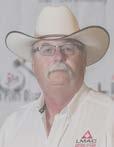
RICK WRIGHT
The Bottom Line
gives the finishing lots a huge advantage over last year and should bring their cost of gain down considerably. Lower grain prices make feeding heifers more attractive; this could result in a smaller price spread between steers and heifers this fall.
Backgrounders will not enjoy the benefit of the lower grain prices as much, as they have a higher percentage of silage in their rations.
Industry experts in Canada are talking about this year being the “consolidation” phase of the cattle cycle. If they are correct, we are at the lowest point of cattle numbers in the cycle, and this year could be the “turn around” year. The Americans are not much different, with the smallest cow herd since the early 1960s. There are fewer cattle out there, and there will be fewer to come in the near future. If the experts are correct, the “consolidation” phase will last 12 to 18 months, followed by the “rebuilding” phase. During that time, there will be more heifers retained and less offered to the feedlots.
The cattle cycle is always at the mercy of the weather. Drought conditions can lengthen portions of the cycle, and the cycle can be different from region to region. Last



• GRASSFED: “True North Foods is partnered with A&W Canada to supply Canadian grassfed beef for A&W’s grassfed burger program.
• SERVICES: Whether you are a specialty producer looking to get your product to a speci c market or distributor, or if you are producing commodity livestock for sale, we can partner with you. From our multi-species capabilities to our ability to handle smaller volumes, we o er excellent capabilities for producers in the Canadian Prairies to maximize their pro tability.
• FACILITY: We have a state-of-the-art facility to allow us to reach markets across Canada, the USA, and beyond. We understand producer’s needs, their care for their animals, and their honest, straightforward nature. Call us to hear how we can work together to get your product to market.
year, drought conditions in the west forced producers to sell their pairs. At the auctions, the pairs were split, with calves sent to the feedlots and the cows to the packers. There was no demand for pairs. This spring, pairs were hard to find, and most are going back to the ranches.
Interest rates are dropping reflecting lower carrying costs for inventory, lowering break evens.
The domestic demand for beef continues to be strong, despite the higher retail prices. Export demand remains strong. Globally, South America is in a major drought, with liquidation in the cattle sector. The USA is still facing drought conditions in several regions. Australia is rebuilding, with good rainfall in the first half of the year.
The seasonal price drop for cows and bulls should be right around the corner. However, this year the drop will not be as large. There will be fewer cows and bulls available. Ground beef demand remains strong, and packers will have to reach out for non-fed cattle.
Deferred delivery calf sales have been strong. Traditionally, the market tends to drop when large volumes come to the markets in late October and November. Ontario buyers were the major drivers on the early electronic sales. Big volume sales during the first two weeks of August saw prices drop slightly.
Confinement yearlings took the biggest plunge in early August. Cattle feeders fearing a major price adjustment started selling 1050 plus weight cattle. These cattle were competing with grass cattle for new available pen space. Grass cattle continue to attract strong demand.
Recent deferred delivery prices included: 700
in AB $460.00
As you can see, each pound is worth a lot of money. I strongly suggest that you work closely with the marketing agent of your choice when marketing your livestock. Once the live sales get started and the market is strong, the sales will fill quickly. There is a great benefit to dealing with someone you know and trust. Your marketer should be focused on getting you the best returns for your entire consignment. Having the biggest sale numbers or the fastest sale doesn’t always benefit you, the consignor. You pay a lot of commission to sell your cattle. Make sure that the commission you pay is working for you. Until next time, Rick

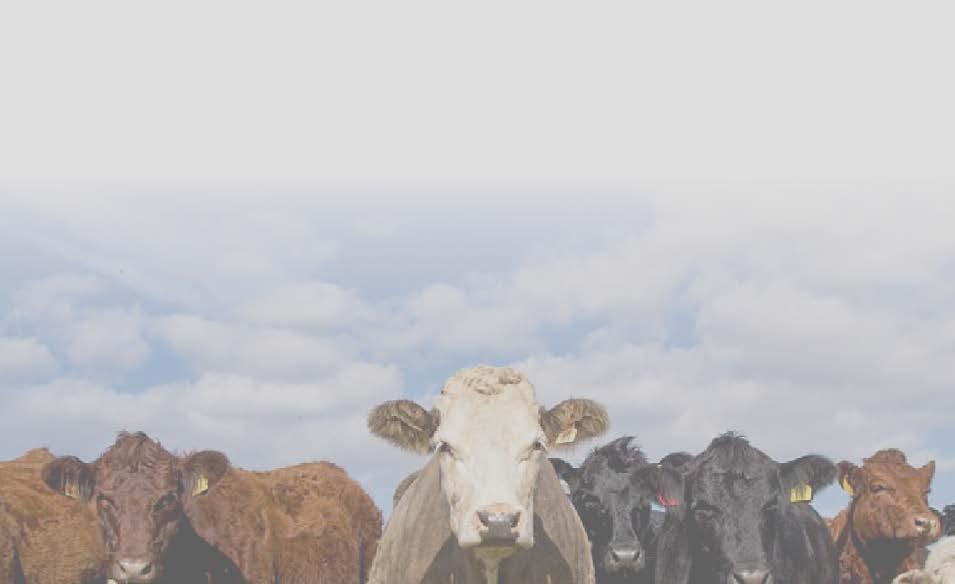


Join us on Sunday, September 15 (rain or shine) between 10am-2pm at the Bruce D. Campbell Farm and Food Discovery Centre for a day filled with activities, games, wagon rides, and giveaways PLUS FREE FOOD SAMPLES WHILE SUPPLIES LAST!
BY PETER FROHLICH, NATIONAL CENTRE FOR LIVESTOCK AND THE ENVIRONMENT, UNIVERSITY OF MANITOBA
Cover crops are important elements in regenerative agriculture, and therefore play an important role in achieving sustainable food production systems. Farm management surveys have reported an increase in their use nationally. Yet in Manitoba and Saskatchewan the practice of growing cover crops has increased at a slower pace when compared to Eastern Canada and the United States.
According to the 2020 Prairie Cover Crop Survey Report, environmental factors like a shorter growing season and limited fall soil moisture on the Prairies limit opportunities to plant cover crops prior to seeding or post-harvest. To address the challenges, researchers from the University of Manitoba and the South East Research Farm (Redvers, SK) have partnered on a project funded by PepsiCo and the Foundation for Food & Agriculture Research’s AgMission™ initiative. The goal of this project is to develop and accelerate the adoption of climate smart agriculture (CSA) practices like the use of shoulder season cover crops (crops grown between a cash crop harvest and the planting of the next cash crop) in Canada’s eastern Prairies.
Cover crops, soil health and cattle production
Cover crops are annual or perennial plant species or a mixture of species. They are seeded with the intent to “cover” the ground and improve the soil. They may include a blend of warm-season and cool-season plants, grasses or cereals, legumes, and Brassica plant species (cruciferous vegetables). Planting cover crops contributes to climate resilient agriculture systems and mitigates climate change. They protect the soil from erosion and contribute to soil organic matter. Cover crops improve soil biological, chemical, and physical properties which enhances soil health. They have the potential to lower greenhouse gas emissions (GHG) through reduced use of tillage, reduced soil nitrogen losses, and increased
carbon sequestration. They can also supress weeds, increase biodiversity and create new opportunities for integrating crop and livestock systems.
Cover crops also contribute to cattle production systems thanks to their potential value as a high-quality forage source. They can be grazed, baled or used for silage. Cattle consume forages, including those from cover crops converting them to high quality protein. In addition, soil health is improved as nutrients in manure reduce the need for commercial fertilizers and increase plant growth including grassland crops, creating feed for livestock while completing the circular bioeconomic cycle. Grazing these crops in grain cropping systems can extend the grazing season, contribute to an increased economic return and diversify agricultural production systems. In related research, Emma McGeough and Yvonne Lawley with the University of Manitoba found that intercropping Italian ryegrass and hairy vetch with corn can meet the dietary requirements for heifers. Developing strategies for growing cover crops on the prairies
During the three-year project that started in the fall of 2023, researchers are exploring planting shoulder season cover crops at the time of annual cash crop seeding or in-crop. The method is called companion-seeding. It involves seeding lower-statured cover crop species along with the primary field crop during spring seeding or broadcast interseeding during the growing season. The strategy can be successful and attractive to farmers on the prairies because it eliminates the need for a separate cover crop seeding pass during the harvest season, allows field crops to grow with minimal competition from the cover crop, and maximizes the window for cover crop growth giving prairie farmers an additional option to incorporate cover crops into their rotation.
Researchers are working with farmers in Manitoba’s
Red River Valley and southeastern Saskatchewan to validate and scale up the CSA practices. They are quantifying their impact on crop yield, grain quality, soil health and fertility, on environmental services and on GHG emissions. Cattle grazing is also incorporated into the system. This fall, farmers participating in on-farm trials who are comparing Italian ryegrass and fall rye as intercropped cover crops with canola are planning to let the cover crop grow for late fall grazing.
Project goal is to accelerate adoption of CSA practices
The project is designed to combine research and on-farm implementation in an innovative way to help accelerate adoption of CSA practices. The research team is co-developing new practices with farmers through workshops, interviews, and on-farm trials to better understand farmer perspectives and challenges they encounter when implementing new practices. Farmer perspectives will be incorporated into the scientific research process. Co-developed research findings will be made available through a range of knowledge sharing techniques, such as web-based platforms and field day events.
The research team includes:
Co-Principle Investigators:
Lana Shaw, Executive Director and Research Manager, South East Research Farm
Yvonne Lawley, Associate Professor, Department of Plant Science, University of Manitoba
Luke Struckman, Principal Consultant, Resilient Agriculture Solutions
Other University of Manitoba Researchers: Francis Zvomuya, Professor, Department of Soil Science
Afua Mante, Assistant Professor, Department of Soil Science
Alejandro Costamagna, Acting Department Head and Professor, Department of Entomology
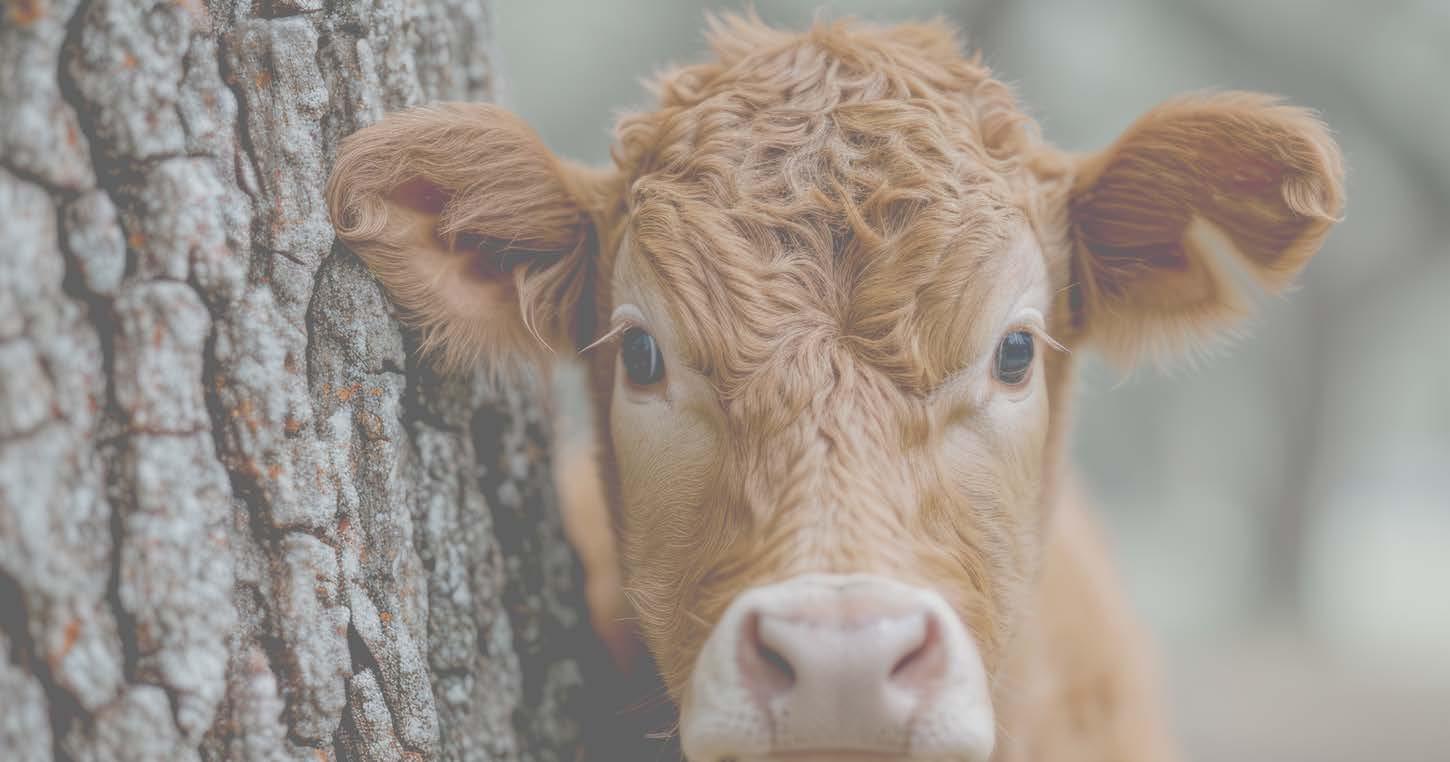
From harsh weather to rugged terrain, various hazards can impact the lifespan of your indicators. Factors like vegetation, fencing and water sources can contribute to wear and tear. Increase retention by implementing environmental modifications or choosing an indicator best suited to your area.
Don’t forget to check the manufacturer recommendations and best practices for the applicator and indicators that you are using. Proper indicator placement is key to increasing retention.
CCIA is led by industry to help you make
better protect your investment.



Elizabeth Nernberg Livestock Specialist Manitoba Agriculture
Elizabeth.Nernberg@gov.mb.ca
Question: I am considering backgrounding my calves instead of selling them after weaning, and maybe even purchasing some. What are some considerations for doing so?
Answer: Weaning is a stressful time for calves, and the first few weeks are the most important! Anything you can do to ease that stress helps them get on the right track. Your management is key during this time to set the calves up for success.
Be sure to work with your veterinarian on a vaccination protocol for when you’re receiving calves. Many producers like to process as soon as possible. Implanting is highly recommended for increased weight gain, improved feed efficiency and leaner carcasses.
Getting those animals started on feed as quickly as possible is critical to get them going. Good quality, long-stem forage, such as grass hay, for that first week is often used to encourage animals to come to the bunk. Sudden introduction of alfalfa hay could cause scours or bloat. Calves can sort out the hay and selectively eat the alfalfa portion and its highly digestible leaves. If using round bale feeders for this alfalfa hay be aware if they get to the bottom of the bale, they may push the feeder off and then engorge on those highly digestible leaves. This could be a recipe for a bloat disaster!
Do not start calves on silage unless they have had prior exposure. Some producers hold off on weaning until the herd is home and are feeding the cow-calf pairs. With the calves eating with momma cow, they will know what silage is about and it will be an easier transition for them. Without prior exposure, the silage may have tastes and odours that may limit intake during the first week or two of getting on feed. Also, avoid feeding silages and high-moisture feeds as they physically do not have enough rumen space to consume enough of these feeds to meet their needs.
Adequate bunk space ensures they all have a chance to access feed. Guidelines vary based on the type of bunk and animal size, but a general guideline is eight to12 inches per head if feed is in front of them most of the time. Providing adequate pen space is important as well, with the general rule of thumb of providing a minimum of 160 to 250 square feet per head.
Often, we focus on the rations provided, but attention must be paid to water as well. Ensure it is clean and fresh. Handheld wire brooms work great to clean out watering bowls. Simply put, if they aren’t drinking, they won’t be eating!
Monitoring for sickness is critical the first few weeks. Time needs to be spent in the pens doing checks at least twice a day. Look for cattle at the bedding pack, standing around the watering bowl or behind the bunk but not eating. Some animals may need to be pushed up to the bunks to eat.
Using smaller receiving pens for the first seven to 10 days makes it easier for the cattle to find feed and water, plus it makes it easier to check and to pull out any sick calves that need to be treated. Many producers use portable panels to make their winter-feeding pens into smaller temporary receiving pens.
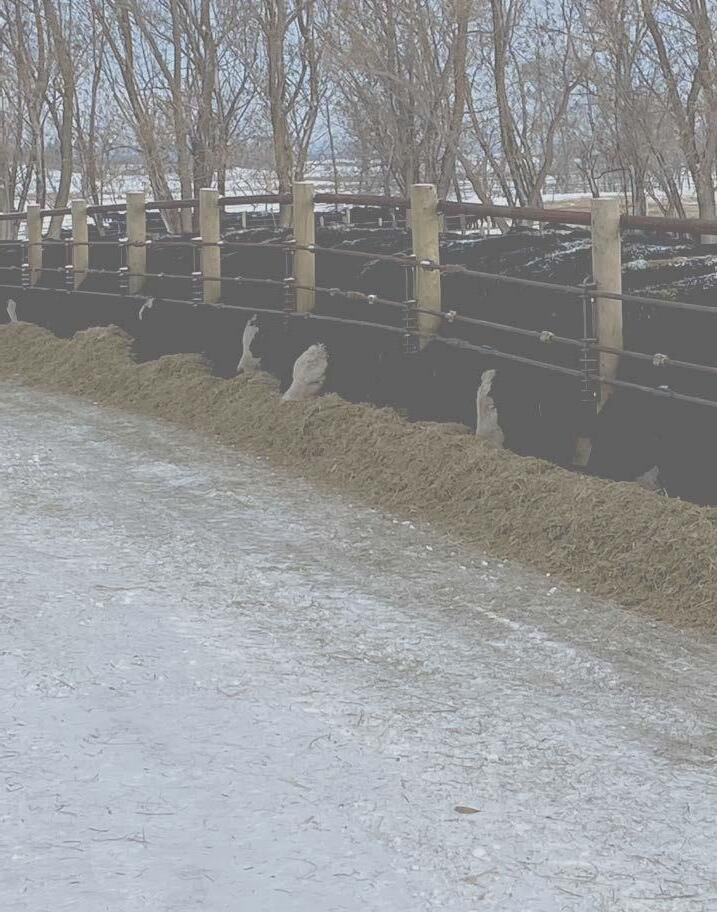
Once you have the target weight and time of marketing, you can do some calculations to determine what ADG is required. For example, going from a purchase weight of 450 to 500 pound medium- to large-frame steers mid November to a shipping weight of 950 to 1050 pounds by end of May would require a target ADG of 2 to 2.5 pounds per day. Is this reasonable based on your frame or weight of calves coming in?
Watch for Part 2 on backgrounding calves in our December Beef and Forage Technical Bulletin, where we take a closer look at ration options and feed bunk management to help you meet the ADG to achieve your marketing plans.
With receiving rations, make gradual changes over a period of about 10 days to decrease the amount of hay and increase concentrates and silage. Below is an example of a set of receiving rations.
During this receiving time, keeping the bunks clean is even more important and many producers do not force the cattle to lick the bunks clean. Our goal is to get them on feed as quick as possible by providing fresh, attractive feed as opposed to making them clean the bunk. Feeding twice a day can also encourage intake and minimize sorting.
When considering to background calves, look at your marketing plan. This involves identifying the target weight for marketing the feeder cattle. For example, lighter feeders can be placed on pasture prior to finishing in feedlots or heavier animals can be marketed directly to feedlots. Identifying the time of year for targeted marketing should also be part of your plan. Usually grass cattle are in greater demand during the early spring, and heavy feeders are generally marketed to feedlots during the late summer.
Remember with backgrounding, we are growing calves at a slower rate of gain to allow them to optimize bone and muscle growth. Attention must be paid to the rations to avoid excess fat deposit. This can be done by targeting average daily gains (ADG) of 1.5 to 2.5 pounds per day. Once on full feed, typically, the rations are 60 to 70 per cent forage. ADGs of less than 1.5 pounds are not efficient or economical.
In the next issue of Cattle Country, a Manitoba Agriculture forage or livestock specialist will answer a selected question. Send your questions to Elizabeth. Nernberg@gov.mb.ca.
StockTalk for Cattle Country is brought to you by Manitoba Agriculture. We encourage you to email your questions to our department’s forage and livestock team. We are here to help make your cattle operation successful. Contact us today.
Andrea Bertholet Killarney 204-851-6087
Andrea.Bertholet@gov.mb.ca
Kristen Bouchard-Teasdale Beausejour 431-337-1688 Kristen.BouchardTeasdale@gov.mb.ca
Shawn Cabak Portage 204-239-3353 Shawn.Cabak@gov.mb.ca
Pam Iwanchysko Dauphin 204-648-3965 Pamela.Iwanchysko@gov.mb.ca
Cindy Jack Arborg 204-768-0534 Cindy.Jack@gov.mb.ca
Juanita Kopp Beausejour 204-825-4302 Juanita.Kopp@gov.mb.ca
Elizabeth Nernberg Roblin 204-247-0087
Elizabeth.Nernberg@gov.mb.ca

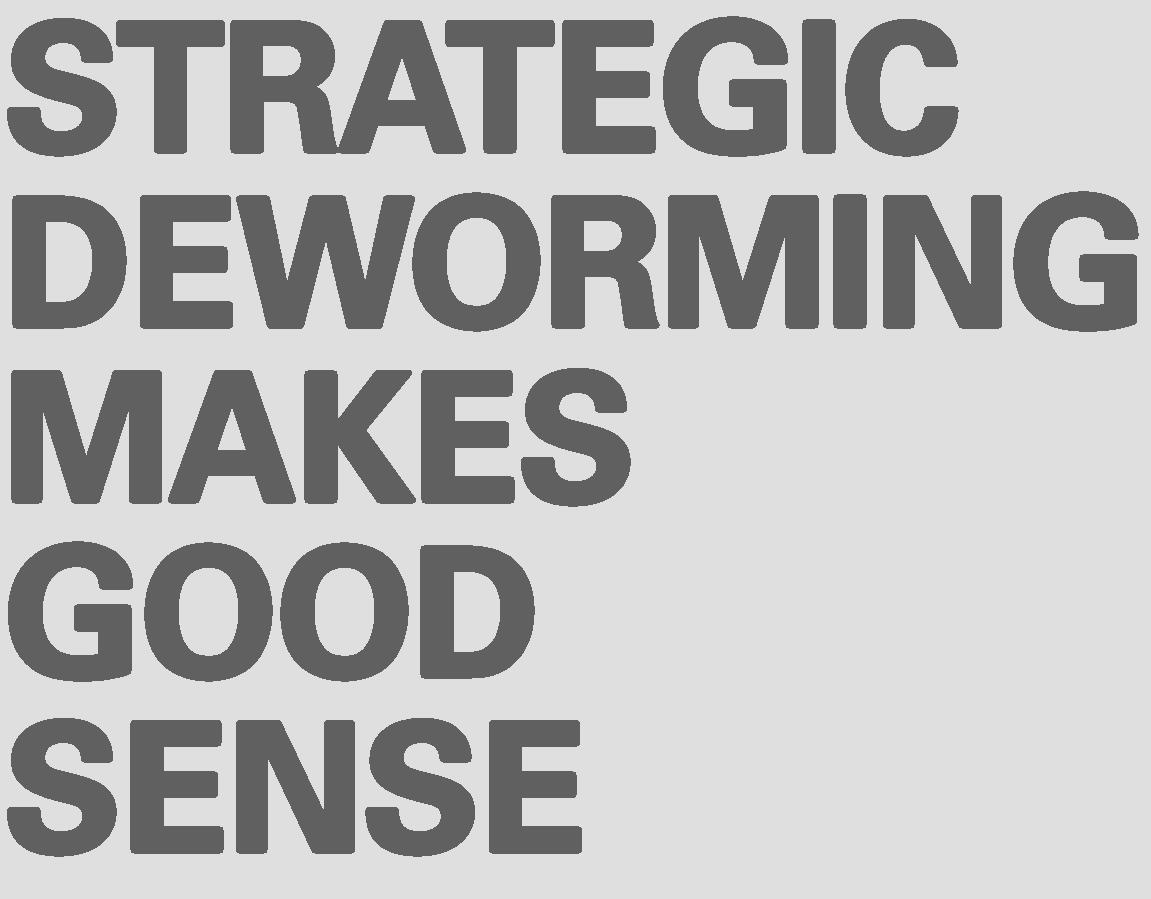


BY: ANNA BORYS, MBP FOOD EXPERT
I haven’t had a “back to school” season for quite a while, but I can’t help but feel a bit of excitement (or anxiety?) as the stores re-stock their shelves with fresh boxes of pencil crayons, binders of every colour, and the coolest styles of backpacks. Part of me (mind you, a very small part) wishes I was walking through those shopping aisles, school supply list in hand, picking out some crispy new scribblers, or a new calculator.
But with back-to-school season, also comes (although I hate to say it), cooler weather, and tighter weekday schedules. In between after school activities, fall sports, and (yuck!) homework, sometimes it can be challenging to get a proper homemade meal together. This super tasty dill-forward Stroganoff is a quick and easy one-pot meal that’ll be on the table in about 30 minutes.
As convenient and simple as a boxed hamburger meal mix is (or as “helpful” as they are), this is a great option if you prefer to have made a meal from scratch, using ingredients you know. This recipe really takes no extra time compared to the boxed alternative, but if you do have a bit of extra time, I’d also suggest adding some broccoli, green beans or any other of your favourite vegetables from the garden, either as a side or in the dish itself to make it go even a bit further. Although I’ve likely said it before, I had a chef instructor that used to tell me that “recipes are just guidelines”. This is a good base recipe that can be adjusted to however you see fit. You can even toss it in a casserole dish, top it with buttered, cheesy breadcrumbs and bake for that extra bit of crispy goodness.
Just like lasagna or chili, this meal also gets better if it refrigerates overnight, making for an even tastier meal the next day. At home we like to do meal prep on Sundays if we know we’re about to have a busy week ahead. This dish can be easily frozen into individual serving sizes. No need to thaw, just pop it into the microwave and in just a few minutes you’ll have a hot tasty meal that’s just as tasty as the day it’s made. As a hot tip, I like to douse mine in Cholula hot sauce.
Enjoy!


Healt H Manage M ent
807 45th St N LETHBRIDGE AB 403-380-6650 EXCEPTIONAL
334 Park Avenue BRANDON MB 204-727-7807
Yields 4-6 servings
Ingredients:
2 Tbsp Canola Oil
3 Cups Mushrooms, sliced
1 lb Ground Beef, lean
2 tsp Garlic, minced
1 can Cream of Mushroom Soup (no salt)
½ Cup Sour Cream
2 tsp Worcestershire Sauce
1L Beef Stock (no salt)
2 tsp Salt, divided ¾ tsp Pepper
6 Cups Egg Noodles, dry
2 Tbsp Dill, chopped fine
1 Tbsp Parsley, chopped fine
METHOD:
Marinade:

1. Heat oil in a large pot over high heat. Sautee sliced mushrooms until browned and have reduced to about a cup of mushrooms. Transfer mushrooms to a secondary bowl and set aside.
2. Add ground beef to same pot and turn heat to medium high. Brown meat until fully cooked. (Drain half of the fat, if desired). Add first half of salt, ground black pepper, minced garlic and continue to cook for an additional 2-3 minutes.
3. In a separate measuring container, whisk together mushroom soup, sour cream, Worcestershire sauce, beef stock and remaining salt. Slowly stir into beef mixture and bring to a boil. Add mushrooms back to pot and stir in egg noodles. Reduce heat to a simmer.
4. Cover and simmer for about 9-10 minutes, stirring occasionally until noodles are fully cooked, and mixture has thickened. Add more water, ¼ cup at a time, as necessary if too thick.
5. Stir in parsley and dill, serve and enjoy!

